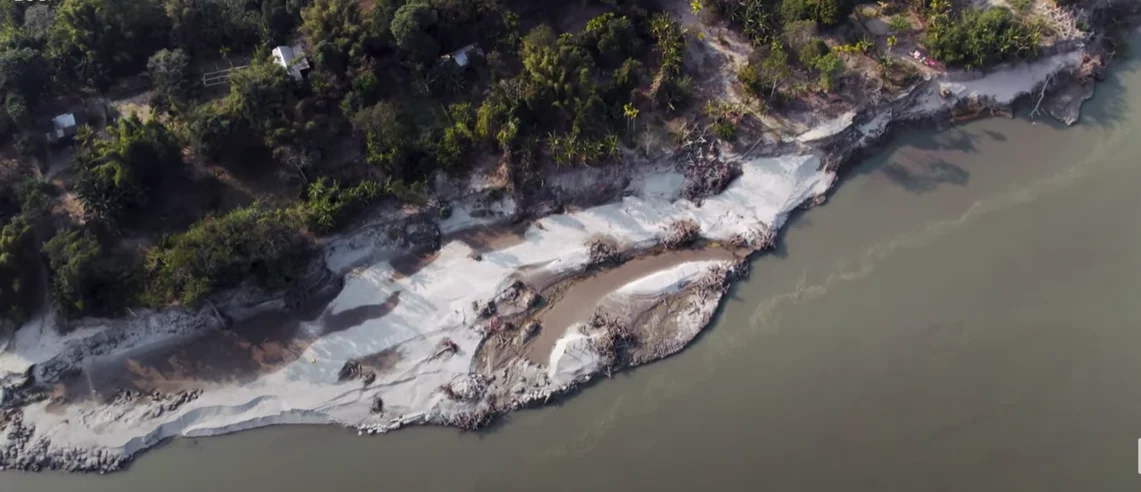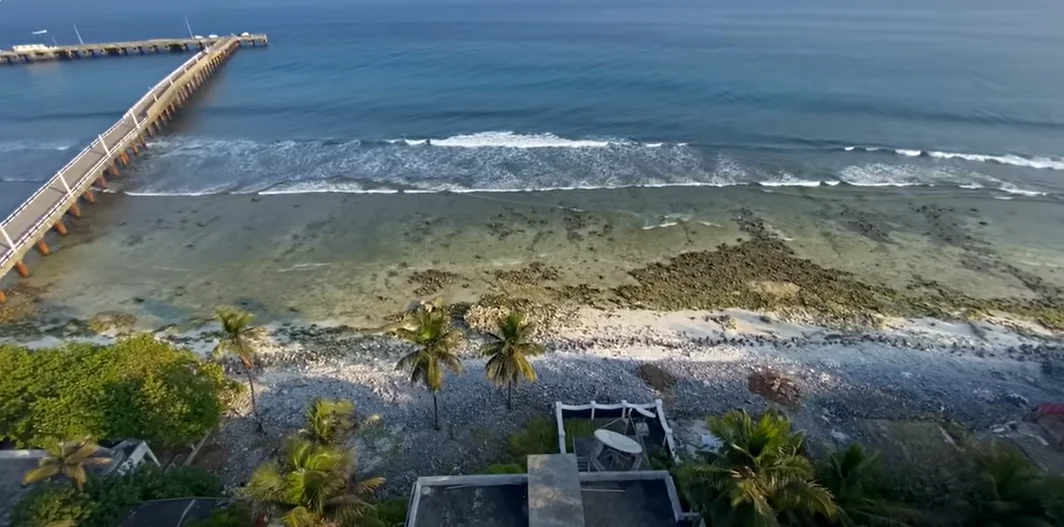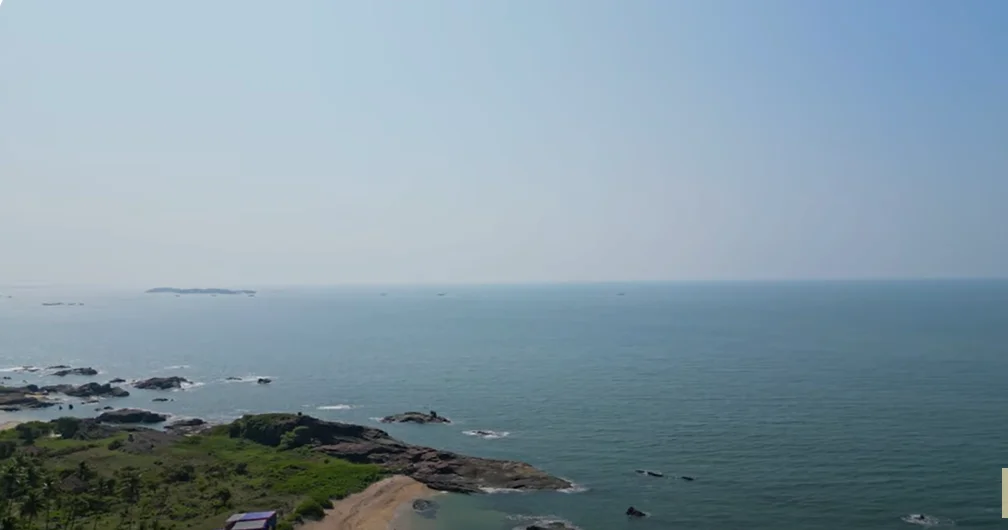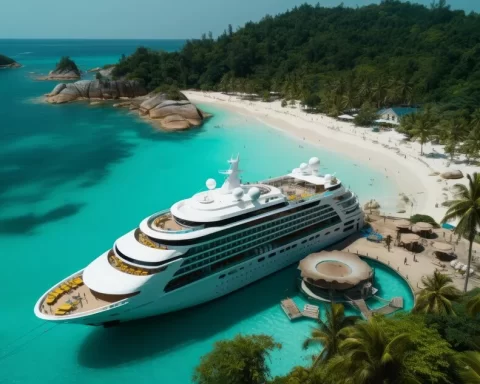India boasts a stunning coastline, dotted with best islands to visit that offer a welcome escape from the mainland’s hustle and bustle. These island paradises promise pristine beaches, turquoise waters, vibrant cultures, and unique experiences. So, pack your bags and sunscreen, and get ready to discover five of India’s most beautiful islands, each offering something special for every kind of traveler.
-
Havelock Island, Andaman and Nicobar Islands

About Place: Nestled amidst the emerald embrace of the Andaman Sea, Havelock Island is the largest island in the Ritchie’s Archipelago. Renowned for its breathtaking beaches with powdery white sand and crystal-clear waters, Havelock Island is an idyllic haven for nature lovers and beach bums alike. Lush rainforests teeming with exotic flora and fauna add a touch of wilderness to this tropical paradise.
Best time to visit: The ideal time to visit Havelock Island is between November and April. During these months, the weather is pleasant, with sunny skies and cool breezes. The monsoon season (May to October) sees heavy rainfall, although the island retains its charm with lush greenery.
How to reach: Havelock Island is not directly accessible by air. Tourists can reach Port Blair, the capital of Andaman and Nicobar Islands, by air from major Indian cities. From Port Blair, government ferries and private cruises connect to Havelock Island, with a journey time of approximately 2-3 hours.
Places to see:
- Radhanagar Beach: Often ranked among Asia’s best beaches, Radhanagar Beach boasts pristine white sand, shallow turquoise waters, and swaying palm trees. Perfect for swimming, sunbathing, and leisurely walks.
- Elephant Beach: Accessible by a short trek through the jungle, Elephant Beach is a secluded cove with calm waters and vibrant coral reefs, ideal for snorkeling and spotting colorful marine life.
- Neil Island: Take a day trip to nearby Neil Island, known for its laid-back atmosphere, pristine beaches like Laxmanpur Beach and Bharatpur Beach, and natural bridge formation.
Where to stay: Havelock Island offers a range of accommodation options, from budget-friendly guesthouses and eco-friendly cottages to luxurious beach resorts. Choose based on your preference for location, amenities, and budget.
Things to do:
- Indulge in water sports like snorkeling, scuba diving, kayaking, and jet skiing.
- Explore the rich biodiversity of the island’s rainforests on nature trails and guided treks.
- Visit the Anthropological Museum in Port Blair to learn about the indigenous Jarawa tribe.
- Sample the delicious local seafood cuisine with a touch of Bengali and Burmese influences.
Tips:
- Pre-booking accommodation, particularly during peak season, is recommended.
- Carry cash as ATMs might be limited on the island.
- Opt for eco-friendly practices like using reusable water bottles and minimizing plastic waste.
- Be mindful of local customs and dress modestly when visiting villages.
-
Majuli Island, Assam

About Place: It is among the best islands to visit. Nestled on the mighty Brahmaputra River, Majuli Island is the world’s largest river island. This unique ecosystem boasts verdant landscapes, vibrant Assamese culture, and a rich biodiversity. Majuli is renowned for its Satras, traditional monasteries that preserve Assamese art, culture, and neo-Vaishnavite traditions.
Best time to visit: The winter months between November and February offer pleasant weather with clear skies and comfortable temperatures. Avoid the monsoon season (June to September) due to flooding risks.
How to reach: Majuli Island is accessible by ferry from Jorhat, Assam. The journey takes approximately 1-2 hours depending on the ferry service. Flights connect Jorhat to major Indian cities.
Places to see:
- Satras: Explore the numerous Satras scattered across the island, each with its unique architectural style, vibrant art forms like mask-making and Assamese paintings, and traditional dance performances.
- The Mask-making Village of Kamalabari: Witness the age-old art of mask-making, a crucial element of Satra performances.
- Local Villages: Immerse yourself in the local Assamese culture by visiting villages and interacting with the friendly people. Learn about their traditional way of life, weaving practices, and Assamese cuisine.
Where to stay: Majuli offers unique homestay experiences in villages, allowing you to experience local life firsthand. There are also a few guesthouses and eco-camps located on the island.
Things to do:
- Cycle through the scenic countryside and explore the island’s verdant landscapes.
- Take a boat ride on the Brahmaputra River and witness the breathtaking sunset.
- Participate in traditional Assamese festivals like Bihu, a vibrant celebration of harvest.
- Sample the local Assamese cuisine, known for its use of fresh river fish.
-
Goa’s Beaches: A Symphony of Sun, Sand, and Serenity

About Place: Goa, India’s smallest state, is synonymous with stunning beaches, vibrant nightlife, and a laid-back atmosphere. However, Goa’s charm extends beyond its mainland. Dotted along its coastline are several captivating islands, each offering a unique experience. South Goa boasts a more serene and secluded vibe, perfect for relaxation, while North Goa pulsates with a lively energy.
Best time to visit: The ideal time to visit Goa’s beaches depends on your preference. The peak season (November to February) offers pleasant weather with sunny skies and cool nights. However, this period also sees higher tourist influx and prices. The shoulder seasons (March to May and September to October) offer comfortable temperatures with fewer crowds.
How to reach: Goa Dabolim Airport is well-connected to major Indian cities. From there, taxis, buses, and rental vehicles can take you to the specific beach or island you choose. For South Goa’s islands, ferries operate from the mainland.
Places to see:
- Palolem Beach (South Goa): A crescent-shaped beach with calm waters, fringed by palm trees and beach shacks, perfect for swimming, sunbathing, and laid-back relaxation.
- Divar Island (South Goa): Accessible by ferry from the mainland, Divar Island is a haven of tranquility, dotted with coconut plantations, paddy fields, and traditional Goan homes. Explore the island by bicycle and savor a local Goan meal at a riverside restaurant.
- Grande Island (South Goa): Known for its historical significance and secluded beaches, Grande Island offers remnants of Portuguese forts and opportunities for dolphin watching and snorkeling trips.
- Arambol Beach (North Goa): A haven for backpackers and yoga enthusiasts, Arambol Beach offers a bohemian charm with flea markets, cafes, and yoga retreats.
- Vagator Beach (North Goa): Popular for its vibrant nightlife, watersports options, and iconic rock formations, Vagator Beach attracts a younger, more enthusiastic crowd.
Where to stay: Goa offers a wide range of accommodation options, from budget-friendly guesthouses and beach shacks to luxurious resorts and boutique hotels. Choose based on your location preference, budget, and desired amenities.
Things to do:
- Indulge in water sports like surfing, parasailing, and kayaking.
- Explore Goa’s Portuguese colonial heritage in the charming capital, Panjim.
- Attend a vibrant Saturday Night Market in Arpora for local crafts, souvenirs, and delicious street food.
- Take a cooking class and learn the secrets of Goan cuisine, known for its use of coconut, seafood, and spices.
- Participate in a yoga retreat and rejuvenate your mind, body, and soul.
Tips:
- Renting a motorbike or scooter is a convenient way to explore Goa’s beaches and hidden coves.
- Bargain while shopping at flea markets and local shops.
- Respect the local culture by dressing modestly when visiting temples and churches.
- Be aware of rip currents, especially during the monsoon season.
-
Lakshadweep Islands, A Tropical Paradise

About Place: A chain of 36 islands scattered across the Arabian Sea, Lakshadweep is a haven of pristine coral reefs, turquoise lagoons, and untouched natural beauty. This remote archipelago offers a true escape from the mainland, with limited options for accommodation and activities, making it ideal for travelers seeking complete seclusion and a connection with nature.
Best time to visit: The dry season between October and March offers pleasant weather with clear skies and calm seas, perfect for diving and water sports. The monsoon season (April to September) sees heavy rainfall, although the islands retain their lush greenery.
How to reach: Lakshadweep Islands are accessible by ship from Kochi, Kerala. Due to the remoteness of the islands, permits are required for Indian citizens and foreign visitors alike. Obtaining permits can be a time-consuming process, so plan your trip well in advance.
Places to see:
- Agatti Island: The gateway to Lakshadweep, Agatti Island offers pristine beaches, turquoise lagoons, and opportunities for snorkeling and diving.
- Kadmat Island: Renowned for its lagoons teeming with colorful marine life, Kadmat Island is a haven for water sports enthusiasts.
- Bangaram Island: This uninhabited island boasts pristine beaches and is a perfect getaway for complete isolation and relaxation.
- Minicoy Island: Known for its distinctive Lakshadweep culture, Minicoy Island offers traditional lacquerware crafts, a laid-back atmosphere, and stunning beaches.
- Where to stay: Lakshadweep offers limited accommodation options, primarily government-run guesthouses and beach resorts. Booking well in advance is essential, especially during peak season.
Things to do:
- Indulge in water sports like snorkeling, scuba diving, kayaking, and windsurfing, exploring the vibrant coral reefs and diverse marine life.
- Explore the underwater world through glass-bottom boat tours, marveling at the coral formations and colorful fish without getting wet.
- Take a leisurely walk along the pristine beaches, collecting seashells and soaking up the sun.
- Experience the unique Lakshadweep culture by visiting local villages, interacting with the islanders, and learning about their traditional way of life.
- Sample the local cuisine, which features fresh seafood, coconut milk, and a blend of South Indian and Maldivian flavors.
- Unwind with a rejuvenating Ayurvedic massage using locally sourced herbs and oils.
Tips:
- Pack light, comfortable clothing and swimwear. Remember, Lakshadweep is a conservative region, so avoid overly revealing outfits.
- Carry eco-friendly toiletries and avoid using plastic on the islands.
- Be aware that mobile network connectivity might be limited on some islands.
- Respect the local culture and customs by seeking permission before taking photographs of people.
About Place: Nestled off the coast of Karnataka, St. Mary’s Island is a group of four small islands renowned for their unique geological formations. Basalt rock formations, sculpted by millions of years of wind and water erosion, create a landscape of towering columns, resembling giant mushrooms and cathedral-like structures.
Best time to visit: The ideal time to visit St. Mary’s Island is between October and March, during the dry season. The weather is pleasant, and the seas are calm, perfect for boat tours and exploring the rock formations. The monsoon season (April to September) sees heavy rainfall and rough seas, making boat trips unsafe.
How to reach: St. Mary’s Island is accessible by boat from the town of Malpe near Udupi, Karnataka. The journey takes approximately 1-2 hours depending on the sea conditions.
Places to see:
- The unique rock formations: Explore the captivating rock formations, aptly named “Doddabasava” (Giant Bull), “Christ the King,” “Mantapa Rocks,” and “Church Island,” each offering a unique perspective on the island’s geological history.
- Marine life: Boat tours often include opportunities for spotting dolphins and various marine birds.
Where to stay: Since St. Mary’s Island is uninhabited, there are no accommodation options on the island itself. Tourists can stay in Udupi or nearby coastal towns and take day trips to explore the island.
Things to do:
- Take a boat tour around the island, marveling at the unique rock formations and spotting marine life.
- Go for a short swim or snorkeling trip near the island, but be cautious of currents and follow safety guidelines.
- Explore the island on foot, following designated trails and respecting the fragile ecosystem.
- Enjoy a picnic lunch on the beach, soaking up the sun and the scenic beauty.
Tips:
- Life jackets are mandatory while on boat tours.
- Carry sunscreen, sunglasses, and a hat for protection from the sun.
- Wear sturdy shoes with good grip for exploring the island.
- Pack light snacks and water for your boat trip.
- Be a responsible tourist and avoid littering on the island or disturbing the wildlife.
Conclusion
By choosing from these five captivating Indian islands, you can create an unforgettable escape tailored to your desires, whether it’s complete seclusion in a tropical paradise, vibrant nightlife, cultural immersion, or a connection with nature. So, pack your bags, embrace the spirit of adventure, and get ready to discover the hidden gems of India’s stunning coastline.


